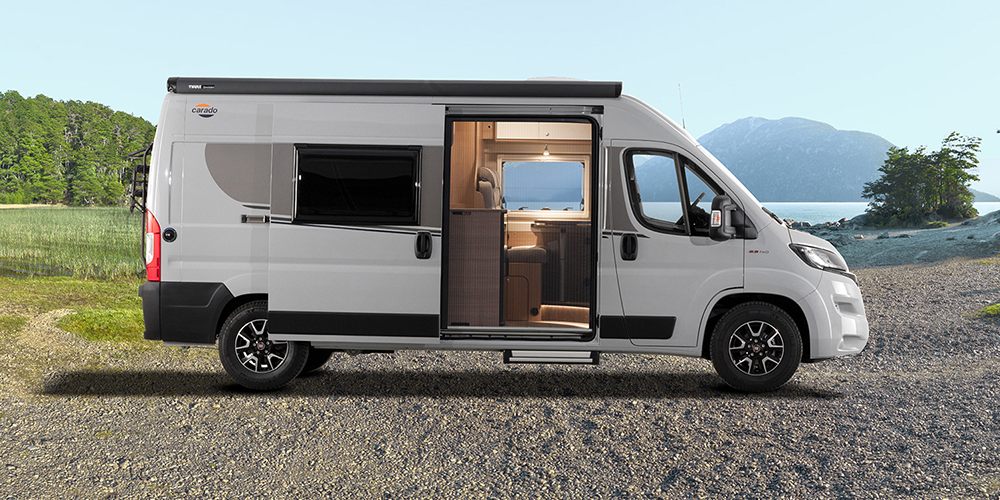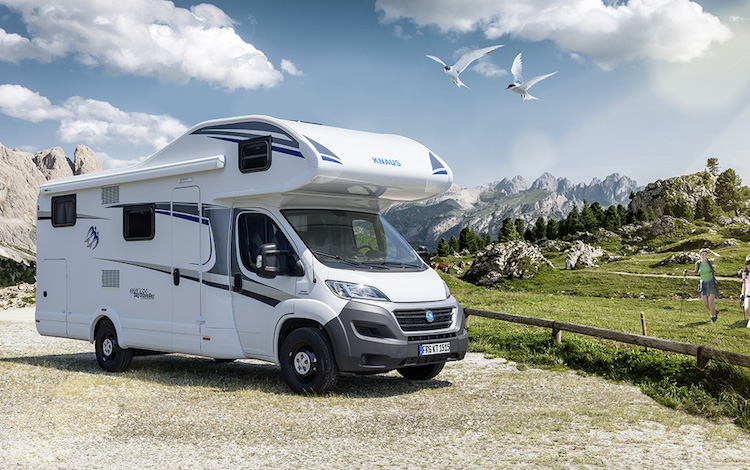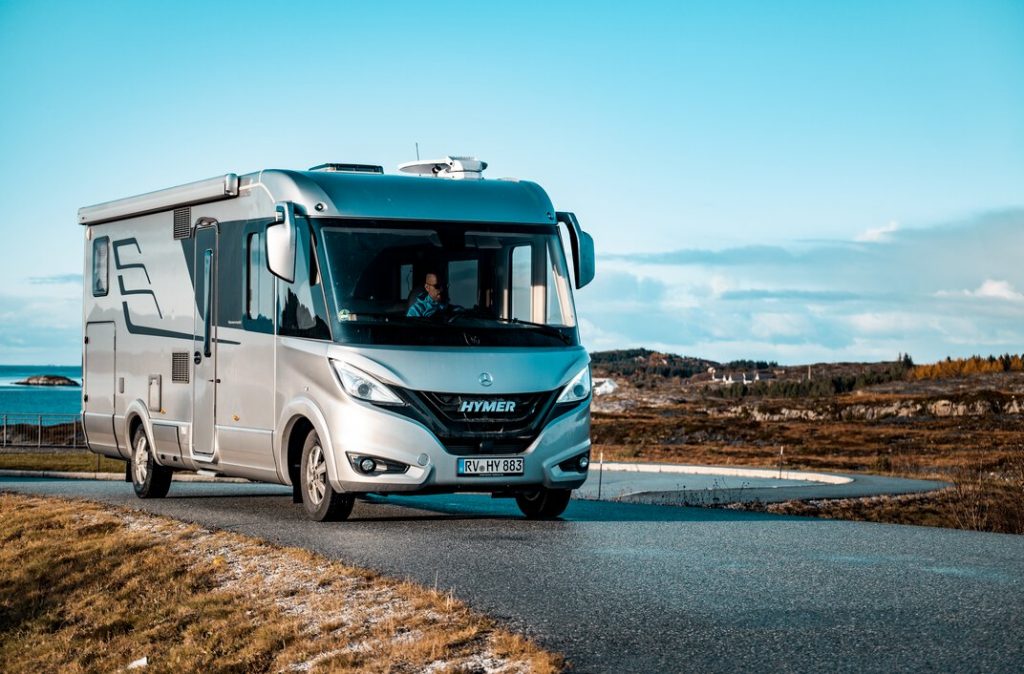

LYNETTE DE VRIES
25 November 2024
Buying a camper, everything you need to know!
Anyone driving home on the European motorways at the end of the holiday season will see countless motorhomes on the road. They glide by calmly and relaxed, and the sight of them evokes positive feelings of freedom and independence in many spectators. This feeling arouses the desire in many people to have their own camper so that they can enjoy the fun and independence of a camping holiday.
As the desire grows, it is initially put to the test. Doubts arise and the purchase of a camper is questioned. After all, a motorhome is not cheap, but one thing is certain: the payback period is enormous. While camping with a motorhome was very Spartan years ago, today’s modern vehicles are pure luxury.
But what should you pay attention to when buying a motorhome? In the following article you can read, among other things, where you can buy a new motorhome and what you should pay attention to.
Buying a motorhome
1. Which type of motorhome is right for me?
Before you buy a motorhome, you need to decide which type you want. There are four most popular types of motorhomes: converted panel vans, alcove, semi-integrated and fully integrated motorhomes.
Extended panel vans
Converted panel vans are very popular because of their compact dimensions and attractive appearance. These smallest representatives of motorhomes are based on vans. In Germany, a distinction is still made between camper vans and converted vans. The camping vans are based on minibuses such as the VW T7, Mercedes V Class or Renault Trafic. These are usually too compact for a sanitary area, but already have beds, a cooker, a cool box and seats on board. Most of them get their 170 cm standing height above the cooking facilities by means of a folding roof that also offers two sleeping places.
The converted panel vans are based on vans such as the Fiat Ducato, Mercedes Sprinter, Ford Transit, VW Crafter or Renault Master and already have a bathroom with toilet, sink or even shower on board. This makes them the most compact “full-fledged” motorhomes.
Both types are easy to maneuver and very mobile on the road. The compact motorhomes with folding roof sometimes even fit in a 2-meter high underground parking garage.

Alcove
You’ve probably heard the term before. But what exactly is meant by an alcove motorhome? Well, an alcove is originally a sleeping area built into the wall without a window. In motorhomes, an alcove therefore refers to a sleeping area the size of a double bed above the driver’s cabin of the motorhome. Depending on the model, the alcove is accessible via a ladder or a built-in staircase. This has several advantages. Firstly, you don’t always have to make a bed before going to bed. Secondly, the large alcove spaces are also suitable for tall people and thirdly, the bed above the driver’s cabin frees up a lot of space in the living area. This results in spacious motorhomes that can also be very short or offer space for many people. A disadvantage is the low height of the alcove of 50 to 80 centimeters. It is usually not possible to sit upright in the bed.
Alcove motorhomes are often designed for families because they offer a lot of space for multiple sleeping places and are relatively cheap to build. The driver’s cabin is not used for living in. The following points should be taken into account with alcove motorhomes:
Due to the height of the alcove, these models are more susceptible to minor damage and parking bumps on the roof. So be careful with low-hanging branches or low bridges. Climbing into the alcove can be difficult and requires a certain degree of maneuverability. This can become difficult as you get older if there is no second, lower bed available. Due to its height and shape, the alcove motorhome is said to have the highest fuel consumption of all motorhomes. Its shape is anything but streamlined.

Semi-integrated motorhomes
Semi-integrated motorhomes are very popular. They owe their name to the fact that the seats in the driver’s cabin are turned backwards when the vehicle is in use and serve as armchairs. The driver’s cabin is therefore partially integrated into the living area. Semi-integrated motorhomes are therefore an intermediate solution between alcoves and fully integrated motorhomes.
The sleek design of semi-integrated motorhomes, in which the driver’s cabin blends harmoniously into the living area, is a favourite with many motorhomes. Semi-integrated motorhomes also have many other advantages:
- A sporty design.
- High driving comfort and good road holding thanks to the low height.
- Lower fuel consumption thanks to the low height and streamlined design.
Because the bed is usually at the back of the motorhome, semi-integrated motorhomes are often longer than comparable alcove motorhomes. Additional sleeping space is often provided by a lifting bed above the seating area in the front of the motorhome. The lifting bed rises to the ceiling when not in use and can be lowered for sleeping.

Fully integrated motorhomes
Fully integrated motorhomes are considered the top class of all motorhomes. Their bodywork is also completely converted around the driver’s cabin. Fully integrated motorhomes are characterised by a large windscreen with a panoramic view of the passing landscape. The driver’s cabin is fully integrated into the living area. Hence the name of this type of motorhome. However, the co-driver does not have his own cabin door.
The advantages of a fully integrated motorhome are:
- Hardly susceptible to rust, because only the chassis is made of metal. The walls and roof are usually made of a sandwich construction with glass fibre reinforced plastic GRP.
- The best insulation of all motorhomes and therefore also the highest winter resistance.
- The layouts are very variable. Compact thanks to the lifting bed above the driver’s seat or spacious with fixed beds in the rear.

2. Tips for buying a motorhome
Before buying a motorhome, you should consider the following aspects:
Budget
Before buying a motorhome, you should know how much you can invest. Nowadays, it is almost impossible to find a new motorhome for less than 50,000 euros. A reasonably priced and reasonably equipped model will easily cost 60,000 euros. If you value more comfort, you should budget at least 80,000 euros.
Also consider the fixed costs of a motorhome. These include road tax, insurance, maintenance costs and possibly winter storage. Together, these costs can amount to 1,000 to 1,500 euros per year.
In order not to go over your budget when buying, you should think about which extras you want to have fitted straight from the factory and which you may only be able to install in the first few years of use. For example, an awning or a bicycle rack can also be purchased and fitted later at a specialist dealer and do not have to be fitted at the factory.
Choose the right type of motorhome for you
To find the right motorhome model for you, you should consider the following aspects:
- How big should the interior be?
- How many people should travel with you and how many overnight stays are there?
- Do you want a fixed bed or do you want to convert the seating area into a bed?
- How economical should the motorhome be when traveling?
- Do you take a lot of luggage with you on your camping holiday?
- Is the design of the motorhome important to you?
- Do you attach great importance to driving comfort?
- How long do you want to be on the road with the motorhome?
- Rent a motorhome first
You should consider renting a motorhome as an investment in buying the right camper. This way you avoid making the wrong purchase. During your first trip with the rental motorhome, you will discover details that you like and things that you do not need or do not want in your own motorhome. This experience will make it much easier to choose the right motorhome for you.
Get a second opinion
Especially when buying used vehicles, you should have the motorhome inspected by TÜV, Dekra or ADAC. This will give you an independent opinion about the motorhome in question.
Dare to negotiate
When buying a motorhome, there is almost always room for negotiation, especially with used vehicles. Depending on your negotiating skills, you should be able to haggle a few percent. But remember that the purchase should only be the beginning of a good relationship between you and your dealer.
3. What driving license do I need for a motorhome?
A camper is almost always heavier and larger than a car. However, the vast majority of motorhomes sold in Germany have a gross vehicle weight of less than 3.5 tonnes. This means that a “normal” class B driving licence is sufficient. However, a C1 or C driving licence may also be required for heavy motorhomes. This depends on the gross vehicle weight or, as stated on the vehicle registration certificate part 1 under F.1, the “technically permissible maximum laden mass”. The following limits apply:
- Driving licence category B: Technically permissible maximum mass up to 3,500 kilograms.
- Driving licence category C1: Technically permissible maximum mass of more than 3,500 kg and at most 7,500 kg.
- Driving licence category C: Technically permissible maximum mass of more than 7,500 kilograms
Since there are virtually no motorhomes on the market in Europe with more than 6 seats that are approved for driving, driving licence categories D1 or D for buses are not relevant here.
4. When is the best time to buy a motorhome?
Autumn is considered the best time to buy a motorhome. Firstly, dealers know which models sold best and were most popular with customers last season. This way, they can give you suitable advice. Secondly, customers can benefit from attractive offers on existing models that dealers want to sell in the current season. This offers good negotiating opportunities. However, when designing the interior, some concessions often have to be made.
If the individual equipment is more important to you than the price, you can also pre-order a model for the new season in the autumn and have it delivered in time for the next camping season in the spring.
5. Buying a used motorhome?
If your budget is less than 48,000 euros, you will have to buy a used motorhome for better or worse. If your budget is between 48,000 and 60,000 euros, you are often faced with a choice: do you buy a poorly equipped but new motorhome or a more comfortable but used model?
If you want to buy a used motorhome, we recommend that you do so from a qualified dealer who is ideally also a member of the DCHV dealer association and has qualified specialists in sales and the workshop. The dealer guarantee protects you in the event of defects that occur after the purchase. These are repaired by the seller as part of the dealer guarantee.
Once you have found your dream motorhome, you should have it inspected by TÜV, Dekra or ADAC. This will give you an independent opinion about the motorhome in question.
